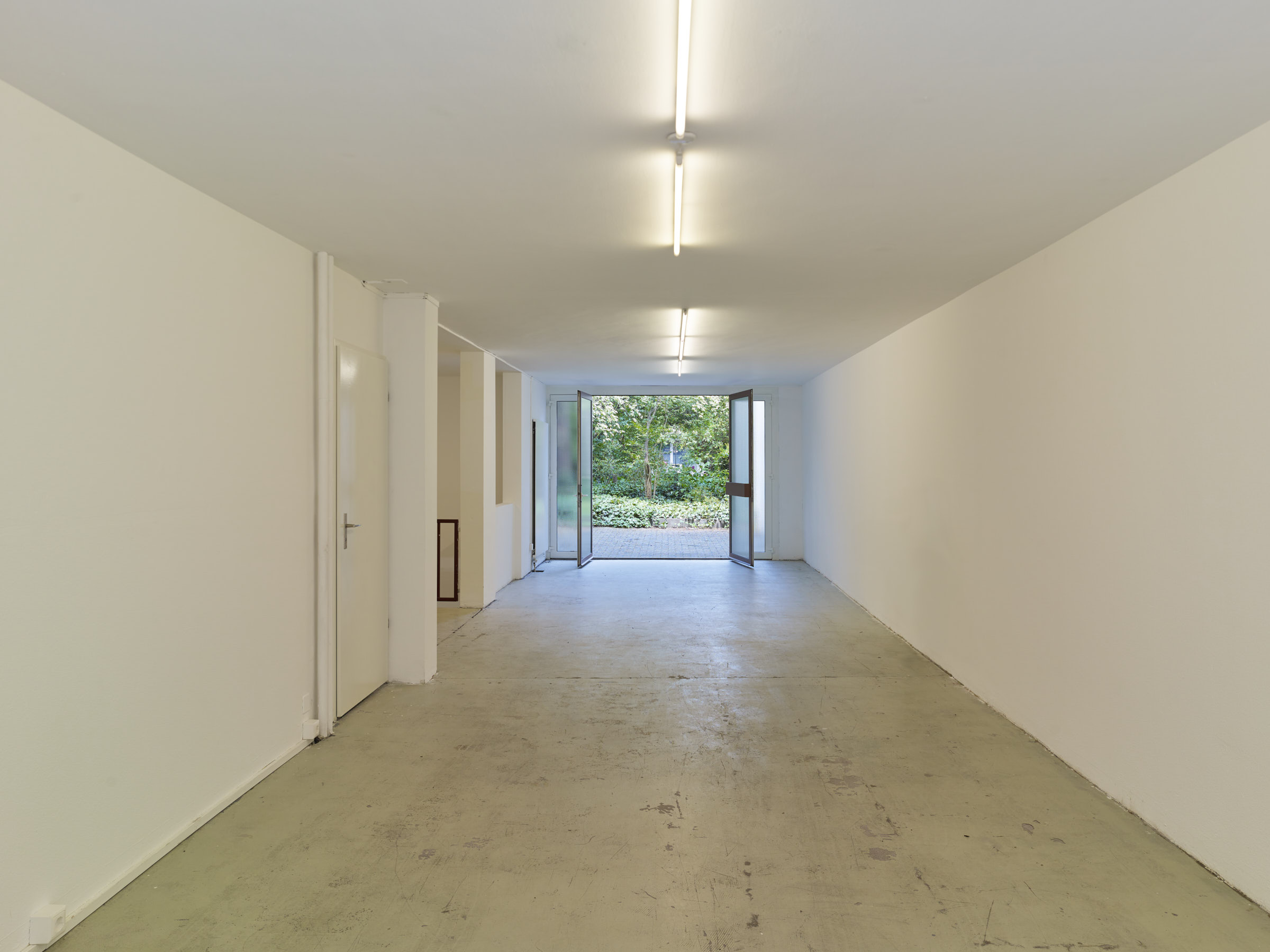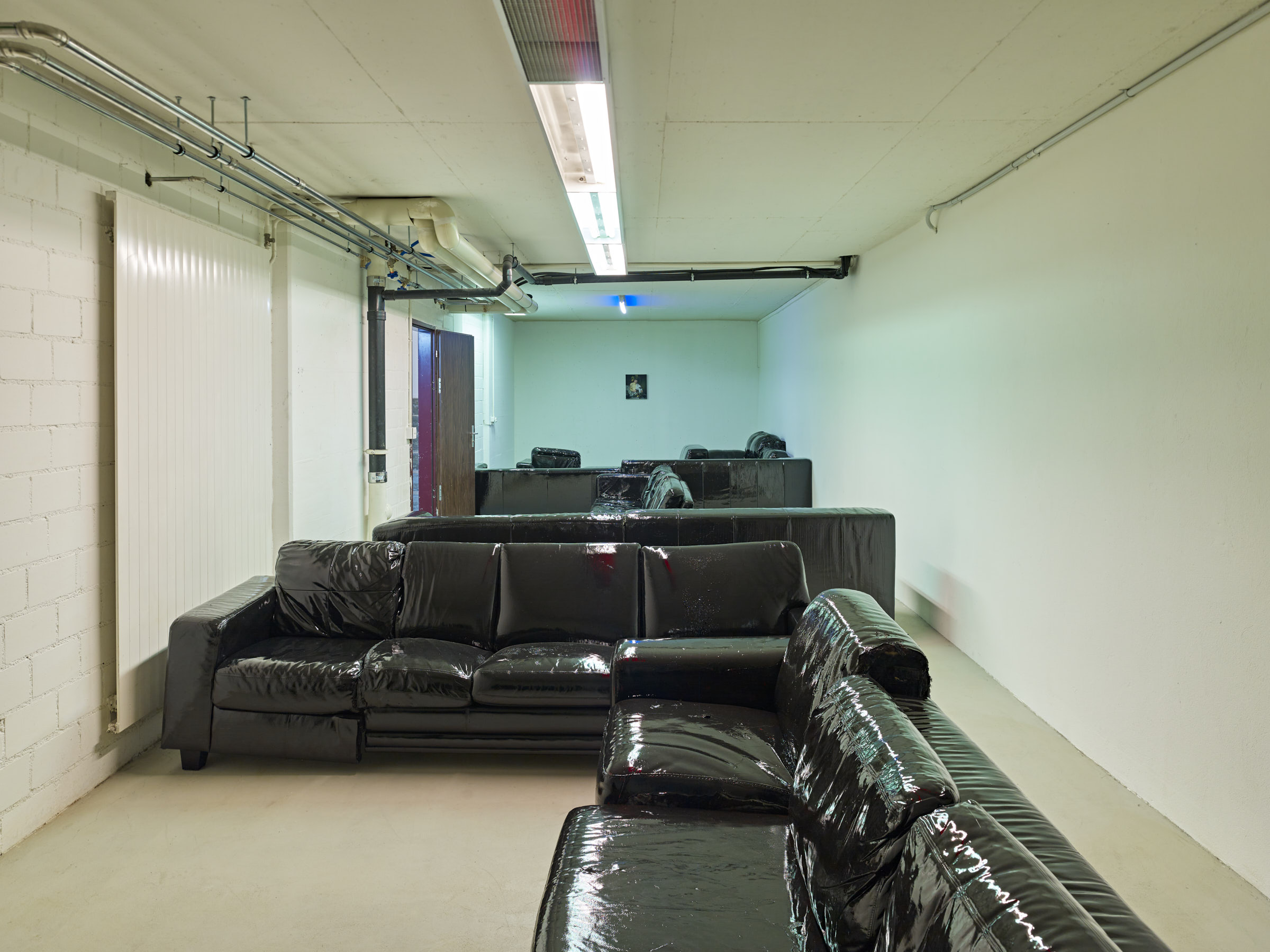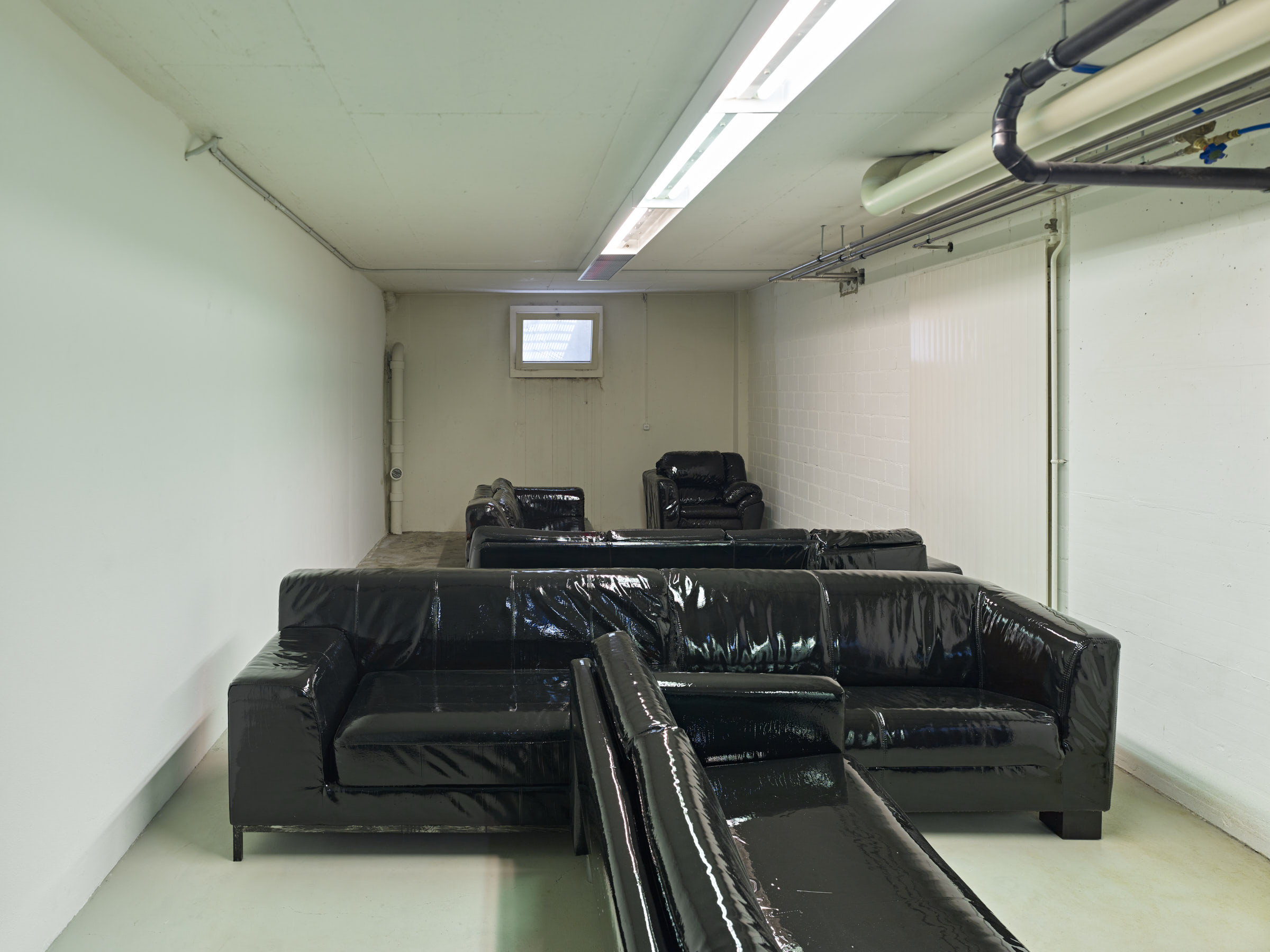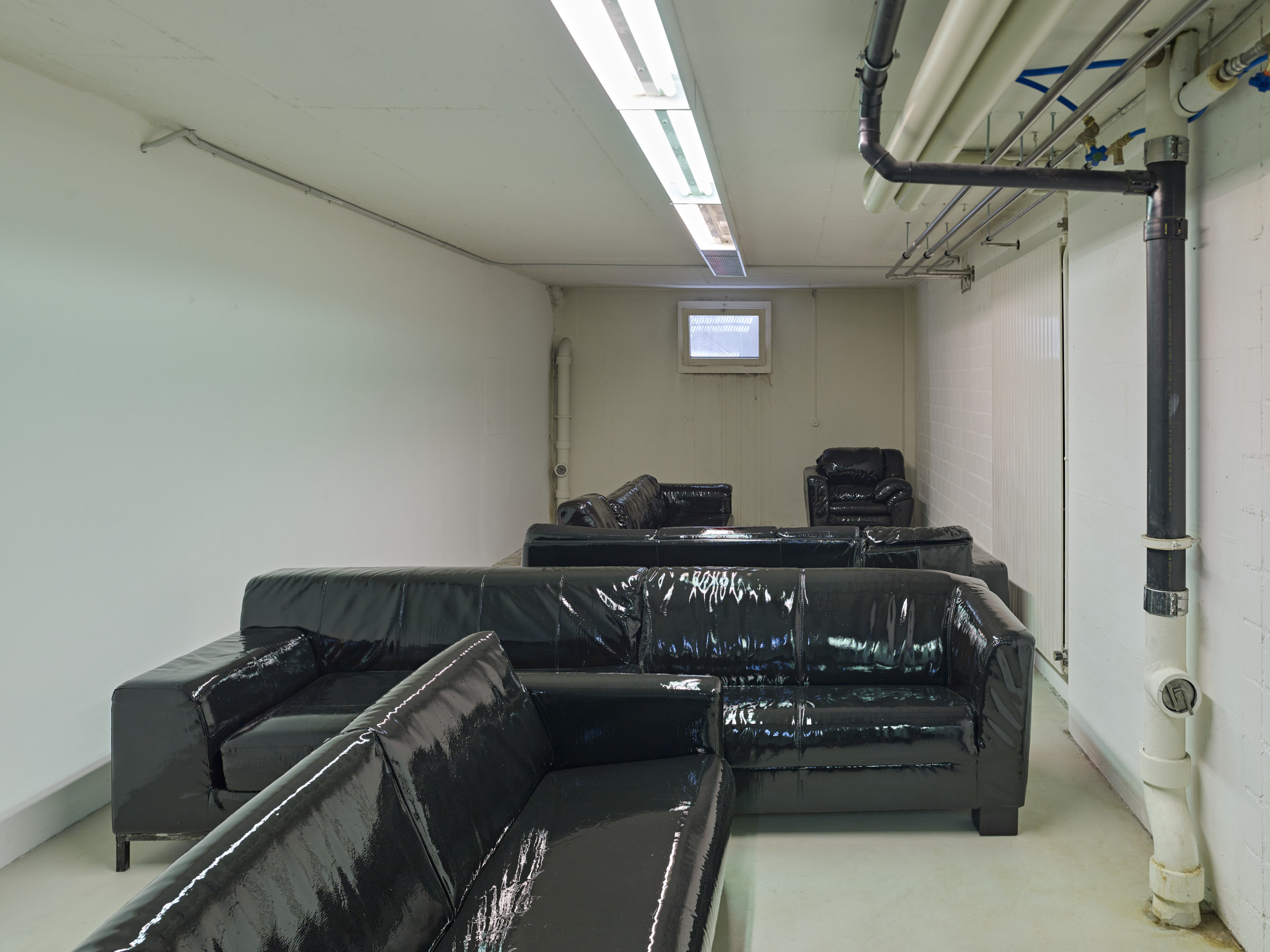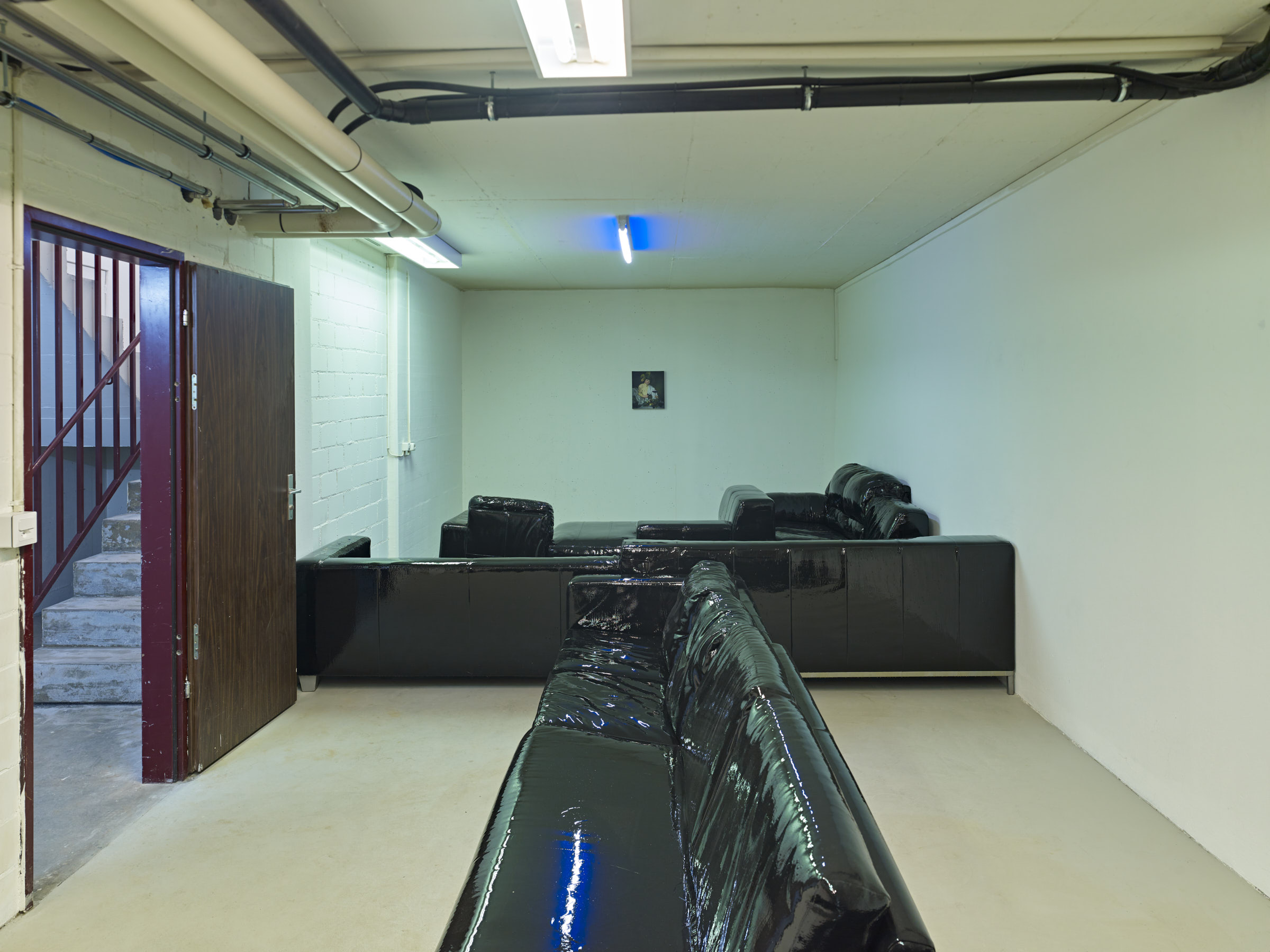PRESS RELEASE
HAMPTON’S CAVE
JUNE 12 – JULY 7, 2023
BLEICHESTRASSE 3, BASEL
In ancient cultures labyrinths were considered traps for malicious spirits, as well as mapping routes for ritual dances. They took on a more formal religious notion in medieval times, symbolising the hard path to God. Later on, those spiritual connotations were lost. Taking forms of corn mazes, amusement attractions, and pleasure gardens; labyrinths reemerged disguised as entertainment.
In 1901, experimental psychologist W.S. Small deployed hundreds of rats in a miniature version of the maze at Hampton Court in London – Henry VIII’s former pleasure palace. Small’s experiment became one of the most influential behavioural studies in contemporary psychology.
During the day, the rats navigated the maze under careful observation, attempting to learn its twists and turns. Trial and error on repeat. Small devised an intricate reward system to manipulate their behaviour, inserting bits of food to drive motivation and decision-making. At night, he had the rats run freely in the maze, letting them get acclimatised to their confusing new habitat. The main discovery was that the rats made decisions based on their environment rather than just rewards – highlighting the importance of the maze itself.
The significance of the environment on mammalian behaviour is a question to every artist navigating an exhibition space.
Benjamin Lallier’s HAMPTON’S CAVE comprises two floors, with the exhibition matched to its specific structure. The largely empty upper floor, with its open doors facing the garden, challenges the idiosyncrasies of the gallery space. It constitutes a symbolic space where the viewer feels free and in control of their movement, unaware that they’ve just become a participant in a simple maze: action, path, reward. Descending to the basement, the viewer enters the second level of the labyrinth: a human-size maze of dark, shiny sculptures. The light dances on their polished surfaces, making them appear iridescent and strangely undressed of their true character as furniture – simultaneously unnerving and exciting.
The painting of Dionysus (after Caravaggio) forms the centrepiece of the exhibition. Opposing the Apollonian force of reason, Dionysus captivates us with his ever-playful gaze, challenging us to rely solely on intuition as our guiding principle.
As the viewer progresses through the maze of couches, their movement becomes controlled and directed. The painting itself remains elusive. Direct access is denied, establishing a relationship that intertwines playful restriction of intimacy with forceful spatial obedience.
The exhibition invites the viewer to experience for themselves the effects and interactions of spatial control and behavioural obedience. Exploring the complex interplay between environment, perception, and choice, it offers a uniquely unsettling and strangely captivating encounter with the limits of reason.
Curated by Eleonora Sutter

